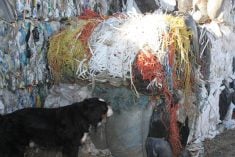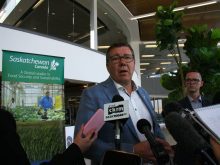Cold is OK for delivering revenge and great for beer.
But it’s bad for soil temperature when it comes to planting canola.
Producers should avoid cold soils wherever possible, said David Blais of the Canola Council of Canada.
“It can be tough to stay away from with the ever-larger number of acres we have to farm these days, but it pays to stay out of cold soil when you can,” he said.
Blais and other council agrologists spoke to about 80 producers attending the organization’s Air Drill Diagnosis Workshop in Saskatoon on April 19.
Read Also

Alberta looks for agricultural plastic management input
Alberta provincial government giving agriculture industry a say through survey in shaping future plastics management
“Ten degrees (Celsius) is ideal for seeding canola. You get a rapid growth spurt and the warmer soils don’t provide the same risks of disease. But 10 degrees isn’t likely possible, especially in heavier land with reduced tillage,” he said.
Soil temperatures of 4 to 5 C will make even germination possible, but determining that temperature needs to done carefully.
Producers should take soil temperature readings at 2.5 to five centimetres in depth at 8:30 a.m. and again at 3:30 p.m. over at least three consecutive days. If the average temperature has reached 4 C, then seeding is likely a safe bet, say agrologists.
Seeding at 1.25 to 2.5 cm deep will take advantage of the daily improvements in soil temperature.
Canola seeded at 2 C will take 15 days to achieve germination and only 75 percent of average germination will occur.
At 4 C, 100 percent of germination will happen, but it will take 12 days to get there.
Canola seeded into soil at 8 C resulted in complete, average germination taking place in just five days.
Despite the rapid germination of canola in warmer soils, longer-term studies show that early-seeded crops fare better than later seeded, so producers need to balance that factor against the rapid emergence of a later seeded crop.














